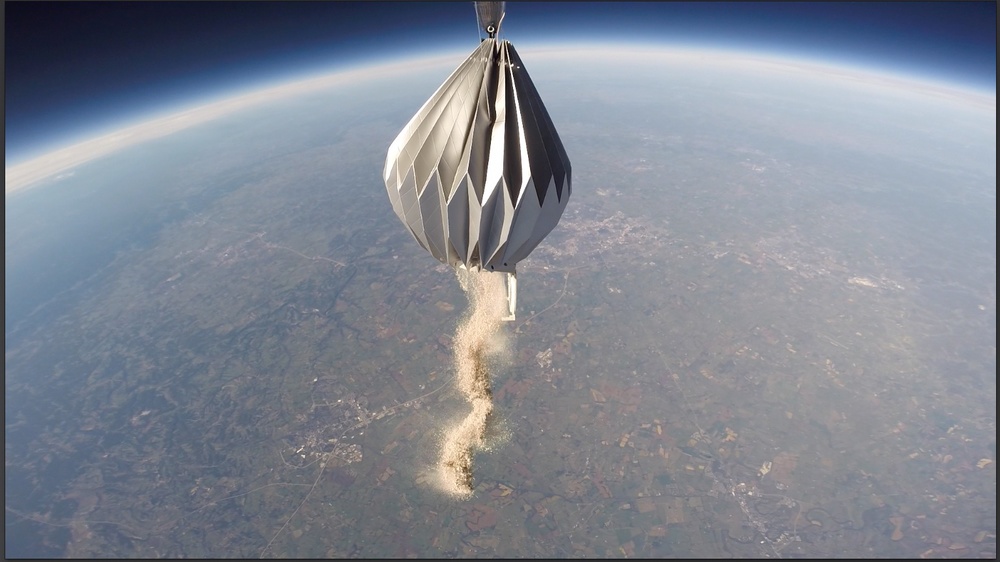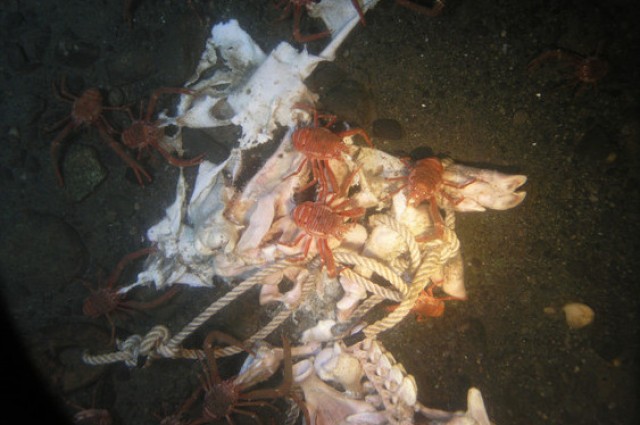Caleb Wilde
(218 comments, 980 posts)
Posts by Caleb Wilde
The Stiff Truth about Rigor Mortis: 10 Things
One. The science of Rigor Mortis is not only important for the preparation of dead humans, it’s also very important in consumable meat treatment. After the slaughter, consumable meat is often shocked with electricity in order to prevent the tightening of rigor mortis and the development of “cold shortening”.
Two. Immediately after death, muscles tend to relax in a phase called “primary flaccidity”. Rigor Mortis takes place after “primary flaccidity”.
Three. Rigor mortis starts in the smallest muscles first and gradually extends to the larger muscles.
Four. The onset of rigor mortis is often determined by temperature. If the body sits in room temperature, rigor begins to occur within three to six hours. If the body is in a higher temperature climate, it occurs more quickly. If the deceased drowned in cold water, rigor mortis may not occur until days after the deceased has been removed from the cold environment.
Five. Because of the different variables in the onset of rigor mortis, it isn’t a solid way of determining the time of death and doesn’t have bulletproof value in forensic evaluation.
Six. Rigor is caused by the increase of lactic acid in the muscles and the fall of pH balance.
Seven. When positioning and embalming a corpse with rigor mortis, the stiffening of the muscles can be “broken” by flexing the muscles of the deceased. Once it’s “broken” it doesn’t reoccur.
Eight. Consumable meat (beef, pork, etc) is generally considered to be tenderer if it is eaten after rigor mortis has passed.
Nine. The stiffness of rigor mortis is often dependent upon the muscle mass of the deceased. If the deceased lacks muscle mass, the rigor mortis is much slighter than that of a person who has more muscle mass.
Ten. After 36 to 72 hours, rigor mortis passes from the deceased and the body now enters a stage called “secondary flaccidity.”
MesoLoft: A Pretty Awesome Way to Scatter Cremated Remains
From the MesoLoft website:
With a shared background in aerospace engineering and satellites, the folks of MesoLoft came together to help people looking for a uniquely memorable way to commemorate and celebrate a well-loved, well-lived life.
Highly-trained and experienced, our launch team’s mastery of the exacting science of high altitude balloon flight ensures that each MesoLoft launch has the highest assurance of success. And our client support team always goes above and beyond in serving the diverse needs of the individuals we serve. Here at MesoLoft, exceeding expectations is the norm.
In fact, we take commemoration to the very edge of space.
Here’s the video:
And here’s a spoof video by Jimmy Kimmel … cause I know you guys like to laugh.
Let’s Talk about Brittany Maynard
Despite all the negativity and divisiveness I’ve witnessed on social media concerning Brittany Maynard’s decision, I can’t help but think that she’s performed a modern day miracle: She’s enabled a large scale death conversation. She’s enabled us to think about end-of-life decisions. And hopefully, she’s inspired us to think about our own mortality.
Like with anything powerful, there’s always the danger of it being abused. And this conversation – the conversation about Brittany’s choice – is incredibly powerful. The abuse of the conversation looks like this: judgment towards Brittany Maynard. Let’s be clear. Brittany Maynard is dead. No amount of judgment will bring her back or reverse her decision.
You can disagree with her decision. That’s fine. In fact, that’s the point. The point is NOT for you sit by and ignore the Brittany Maynard conversation with formulaic clichés; the point is for you to deal with these thoughts internally … to let them settle into your being and find a home. The point is for you to think about how you want to die and what you would do if you found out that you were terminal. You’ll kill this very valuable conversation by getting stuck in judgment instead of asking yourself some very important questions.
Her death, whether you agree with it or not, has provided you with an opportunity to grab ahold of the end-of-life conversation, and help create a future for yourself where you know what YOU want.
Do you want palliative care?
Hospice care is a fantastic way of bringing terminally ill patients home while simultaneously relieving their physical and emotional pain through various forms of care. Is that something you want?
Do you want “death with dignity” laws in your state?
As of today, only Oregon, Washington and Vermont have “death with dignity” laws. If this is something you’re pro or against, it’s time to start voicing your opinion; and make sure you have legitimate reasons behind your opinion.
Have you thought about a living will?
Do you want to die with tubes hooked into your body, being sustained indefinitely by machines while your unconscious body lives on in a semi vegetative state? I don’t. And I’ve made it clear that I don’t. If you want the cyborg death and you don’t want anyone “pulling the plugs”, that’s fine … but either way you should probably make it official by creating a LIVING WILL.
At what point will you say, “I’m done with the medical ‘miracles’ and I’m ready to die”?
Perhaps one day you’ll be under dialysis, or have cancer that “might” be able to be fought through an undetermined amount of chemotherapy. How much are willing to tolerate? At what point are you ready to say, “enough is enough”?
If we look to answer these questions and refrain from judging Brittany’s very personal decision, value will come from Brittany’s death … and not more divisiveness. Because, according to Gallop, this issue IS the most divisive issue in America. It’s more divisive than abortion. It’s more divisive than LGBTQ rights.
And this is the reason it’s so divisive: we’ve given such little thought to end-of-life decisions that when we talk about “death with dignity” our reactions are almost entirely emotional. We react entirely out of anger, or compassion and we have little to say in the vein of reason. We talk about “slippery slope” or we use the “God argument” or we harken back to how we put down our dog when the dog couldn’t walk anymore (which really isn’t helpful to compare people to animals).
As I — and many others — have said, most Americans obsessively attempt to deny their own mortality. Elisabeth Kübler-Ross writes in “Death: The Final Stage”:
Dying is an integral part of life, as natural and predictable as being born. But whereas birth is cause for celebration, death has become a dreaded and unspeakable issue to be avoided by every means possible in our modern society. … It is difficult to accept death in this society because it is unfamiliar. In spite of the fact that it happens all the time, we never see it. When a person dies in a hospital, he is quickly whisked away; a magical disappearing act does away with the evidence before it could upset anyone. … But if we can learn to view death from a different perspective, to reintroduce it into our lives so that it comes not as a dreaded stranger but as an expected companion to our life, then we can also learn to live our lives with meaning— with full appreciation of our finiteness, of the limits on our time here.
Where does the end-of-life conversation go from here … after Brittany Maynard? I don’t know. Nobody knows. Because the conversation is partially up to you and me. Do we let the conversation die in judgment and emotions? Or do we take the stage that Brittany’s death created and talk about something we rarely talk about? Can we learn to make death the “expected companion”? I hope we take the stage. I hope we share. I hope we embrace mortality and the life that comes with it.
What Happens To A Dead Body In The Ocean?
Via IFL Science:
According to TV mobsters, to be “sleeping with the fishes” is the worst punishment anyone can receive. There are many reasons that human bodies end up in the ocean, but they all have one thing in common: it is not entirely clear how scavengers in the ocean deal with them. In order to investigate how this decomposition occurs, a Canadian team deposited pig bodies into the Saanich Inlet over the course of three years and monitored scavenger progress with underwater cameras. The research was conducted by Gail Anderson and criminologist Lynne Bell of Simon Fraser University, and the paper was published in PLOS ONE.
Pig carcasses were chosen for this study because they are good approximations of a human’s gut microbe fauna, size, skin, and amount of body hair. In addition to studying how scavengers respond to terrestrial mammals, this research is also valuable to forensic scientists who can use the information to help solve crimes.
Here’s the video:
















